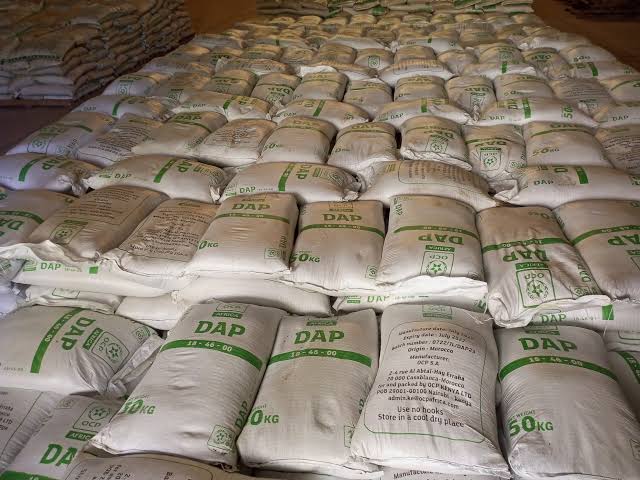EXPLAINER
Hello Folks! Agriculture receives a sizable chunk of spending in each budget cycle. However, farmers and consumers do not feel its impact. Today, we delve into the Kenyan Government's Agricultural Interventions: 🧵
Hello Folks! Agriculture receives a sizable chunk of spending in each budget cycle. However, farmers and consumers do not feel its impact. Today, we delve into the Kenyan Government's Agricultural Interventions: 🧵

1. WHAT ARE THE VARIOUS GOVERNMENT PROGRAMS ON AGRICULTURE IN KENYA?
📄National Value Chain Development Project: This program supports priority value chains such as maize, coffee and horticulture by improving farmer access to inputs, extension services, storage and markets.
📄National Value Chain Development Project: This program supports priority value chains such as maize, coffee and horticulture by improving farmer access to inputs, extension services, storage and markets.
It strengthens farmer groups for collective bargaining, reduces post-harvest losses and enhances incomes through better infrastructure and commercialization.
📄Fertilizer Subsidy Program: The subsidy program lowers fertilizer prices to make inputs more affordable for smallholder farmers, boosting soil fertility and yields. This helps stabilize food supply and improve food security.
📄County Agricultural Policies: County governments develop localized policies that reflect their unique crop and livestock systems. They invest in irrigation, extension services and markets, while also promoting climate-smart agriculture and youth involvement in agribusiness.
📄Kenya Climate-Smart Agriculture Project: KCSAP promotes practices that boost productivity while helping farmers adapt to climate change. It supports drought-tolerant seeds, water harvesting, conservation farming and agroforestry to enhance resilience and reduce rural poverty.
📄National Irrigation Schemes: Managed by the National Irrigation Authority, these schemes expand irrigated farming to reduce dependence on rain-fed agriculture; creating jobs and strengthening food security.
2. HOW MUCH HAVE THESE PROGRAMS BEEN ALLOCATED?
⭐National Agricultural Value Chain Development Project (NAVCDP): Ksh 10.2 Billion
⭐Fertiliser Subsidy Programme: Ksh 8 Billion
⭐Food Systems Resilience Project: Ksh 5.8 Billion
⭐National Agricultural Value Chain Development Project (NAVCDP): Ksh 10.2 Billion
⭐Fertiliser Subsidy Programme: Ksh 8 Billion
⭐Food Systems Resilience Project: Ksh 5.8 Billion
⭐Kenya Livestock Commercialisation Programme (KeLCoP) – Ksh 1.6 Billion
⭐Food Security & Crop Diversification Project: Ksh 1.2 Billion
⭐Food Security & Crop Diversification Project: Ksh 1.2 Billion
2. WHAT ARE THE CHALLENGES FACING THESE PROGRAMS?
✅Public Finance Inefficiencies: Agricultural programs often suffer from budget delays, underfunding and misallocation of resources. Corruption and weak accountability reduce the impact of funds allocated to farming...
✅Public Finance Inefficiencies: Agricultural programs often suffer from budget delays, underfunding and misallocation of resources. Corruption and weak accountability reduce the impact of funds allocated to farming...
with money sometimes diverted away from intended beneficiaries.
✅Lack of Targeted Subsidies: Subsidy programs such as fertilizer support are not always well-targeted. Wealthier or politically connected farmers sometimes benefit more than smallholders...
✅Lack of Targeted Subsidies: Subsidy programs such as fertilizer support are not always well-targeted. Wealthier or politically connected farmers sometimes benefit more than smallholders...
while deserving farmers face delays or exclusion.
✅Debt Write-Offs: Frequent government debt write-offs for cooperative societies and farmers create a culture of dependency and moral hazard. Instead of encouraging financial discipline and sustainability...
✅Debt Write-Offs: Frequent government debt write-offs for cooperative societies and farmers create a culture of dependency and moral hazard. Instead of encouraging financial discipline and sustainability...
such policies can discourage repayment of loans and weaken agricultural credit systems.
✅Poor Policy Coordination: There is often overlap between national and county agricultural programs leading to duplication and wasted resources. Inconsistent policies...
✅Poor Policy Coordination: There is often overlap between national and county agricultural programs leading to duplication and wasted resources. Inconsistent policies...
also discourage long-term investment in the sector.
✅Weak Market Infrastructure: Even when production rises, farmers face challenges with poor storage, limited processing capacity and weak transport systems. This leads to high post-harvest losses and low returns for producers.
✅Weak Market Infrastructure: Even when production rises, farmers face challenges with poor storage, limited processing capacity and weak transport systems. This leads to high post-harvest losses and low returns for producers.
✅Climate and Environmental Risks: Despite investments, interventions remain vulnerable to droughts, floods and climate change. Slow adoption of climate-smart practices undermines resilience.
✅Political Interference: Some programs are used as political tools with distribution of inputs or project selection influenced by patronage rather than need. This weakens efficiency and trust in government initiatives.
Ends!!
Ends!!
• • •
Missing some Tweet in this thread? You can try to
force a refresh










